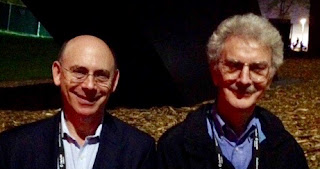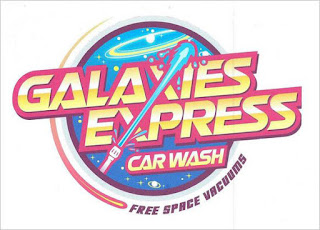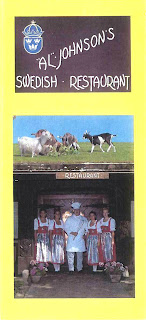TTABlog Quarterly Index: October - December 2019
E-mail subscriptions to the TTABlog are available. Just enter your e-mail address in the box on the right to receive a daily update via Feedblitz. You may also follow the TTABlog on Twitter: @TTABlog.

Section 2(d) - Likelihood of Confusion:
- WYHA? ECHO 911 Confusable with ECHO112 for Emergency Location Software, Says TTAB
- TTABlog Test: Are AGUAMALA and ELECTRIC JELLYFISH Confusable for Beer? [Yes]
- TTABlog Test: Three More Appeals from Section 2(d) Refusals
- TTAB Sustains Section 2(d) Opposition to CRAFT BEARINGS Based on Opposer's Common Law Use of CRAFT BEARING COMPANY
- TTABlog Test: Three Recent Section 2(d) Appeals
- TTAB Dismisses Opposition to BLUE INDUSTRY for Clothing, Finding INDUSTRY to be a Weak Formative
- Finding Distilled Spirits and Malt Related, TTAB Sustains 2(d) Opposition to BLACKLAND DISTILLERY
- Precedential No. 32: Finding Bakery Shops and Bread Buns Related, TTAB Affirms 2(d) Refusal of COUNTRY OVEN
- Fame Plays Dominant Role in OLD NAVY and BACCARAT Section 2(d) Opposition Victories
- CAFC Affirms TTAB: BEAST MODE SOCCER Confusable with BEAST MODE for Clothing
- TTABlog Test: Are CRUCIBLE COOKWARE and LE CREUSET Confusable under the Doctrine of Foreign Equivalents? [Yes]
- TTABlog Test: Are ACCELETERM and LINCOLN TERMACCEL Confusable for Life Insurance Services?
- WYHA? "DIRTY LAUNDRY" for Clothing Confusable With "DIRTY LAUNDRY" for Footwear, Says TTAB
- TTABlog Test: Are "PUBLIC GOODS" and "PUBLIX" Confusable for Personal Care Products? [No]
- TTABlog Test: Are These Two Word+Design Marks Confusable for Food Items and Restaurant Services? [No]
- TTABlog Test: Are SIELLA’S and CIELA Confusable for Skin Care Products? [Yes]
- Divided TTAB Panel Reverses Section 2(d) Refusal of MINIBAR SMARTSNAX for Minibar Snack Food
- TTABlog Test: Is "RAINFOREST NUTRITION" Confusable With "RAINFOREST ANIMALZ" for Nutritional Supplements? [No]
- TTABlog Test: How Did These Three Recent Section 2(d) Appeals Come Out?
- TTABlog Test: Is INTEGRATED PERFORMANCE CARE SYSTEMS Confusable With This Word+Design Mark for Chiropractic Services? [No]
- TTABlog Test: How Did These Three Recent Section 2(d) Appeals Come Out?
Section 2(e)(1) - Mere Descriptiveness:
- WYHA? Precedential No. 38: TTAB Rules that Patent Filings Are Probative Evidence of Descriptiveness
- Divided TTAB Panel Finds "19 CRIMES" Merely Descriptive of Videos and Entertainment Services
- WYHA? TTAB Affirms Mere Descriptiveness Refusal of CONSERVATIVE INSTITUTE for On-Line Information Services
Section 2(e)(5) - Functionality:
Abandonment:
- TTAB Orders Cancellation of Part of POLO GIRLS Registration Due to Nonuse
- On Remand, TTAB Denies Abandonment Claims But Finds That "ADD A ZERO" Fails to Function as a TM for Shirts and Caps
- Precedential No. 30: TTAB Denies Abandonment Counterclaim for Failure to Prove No Intent to Resume Use
- Precedential No. 37: TTAB Rules that the Color Red is Generic for Saw Blades
- Precedential No. 36: TTAB Deems ALLERGY CARE Generic for ... Guess What?
- TTAB Finds THE VITAMIN SHOPPE Generic for . . . . Guess What?
- Precedential No. 28: TTAB Affirms Genericness Refusal of Packaging Design for Socks
- TTAB Orders Cancellation of Part of POLO GIRLS Registration Due to Nonuse
- TTAB Affirms Refusal of USER FIRST for Software Tools: Specimen Doesn't Show Use of Mark
- TTAB Affirms Failure-to-Function Refusal of INTELLIGENCE OF THINGS for Supply Chain and Engineering Services
- Precedential No. 33: Another Failure-to-Function Refusal
- TTABlog Test: Does "HICCUP" Create a Separate Commercial Impression in These Specimens of Use?
- On Remand, TTAB Denies Abandonment Claims But Finds That "ADD A ZERO" Fails to Function as a TM for Shirts and Caps
- WYHA? TTAB Affirms Refusal of PREVENTION CHAIN for Swine Disease Prevention Services: Specimens Failed to Show Use as a Mark
- TTABlog Test: Does This Specimen of Use Support Registration of BOWL & STIX?"
- TTAB Affirms Failure-to-Function Refusal of Informational Phrase for Bumper Stickers
Discovery/Evidence/Procedure:
- Ninth Circuit Reverses District Court: No Claim Preclusion from TTAB Dismissal of Cancellation Petition
- Precedential No. 35: TTAB Dismisses Appeal Because Applicant Did Not Address Drawing and Color Requirements
- Precedential No. 34: TTAB Denies Motion To Compel Production Of Metadata Because Opposer Didn't Ask For It
- Precedential No. 31: TTAB Enters Judgment as a Sanction for Willful Evasion of Discovery
- TTAB Denies Cancellation Petition Because Petitioner Failed to Prove Standing
- District Court Dismisses Section 18 Counterclaim for "Cancellation by Restriction"
- District Court Dismisses PRETZEL CRISPS Section 1071(b) Appeal for Lack of Subject Matter Jurisdiction
- TTAB Dismisses "OCALA HORSE PROPERTIES" Cancellation Petition Due to Lack of Standing
- Recommended Reading: The Trademark Reporter, Nov.-Dec. 2019 Issue
- John B. Farmer: "Benefits of Mark Registration"
- Webcast of NUSL Panel Discussion: "The Original Sin of Trademark Law: Failure to Function" (Nov. 5, 2019)
- Schwimmer and Welch: "U.S. Law Inches Towards Protecting Trademark Reputation Without Use"
- CAFC Upholds TTAB Dismissal of "Goats on a Roof" Cancellation Petition Due to Lack of Standing
- CAFC Remands GALPERTI Case to TTAB for Application of Proper Fraud Analysis
- CAFC Affirms TTAB: BEAST MODE SOCCER Confusable with BEAST MODE for Clothing
Text Copyright John L. Welch 2019.






































